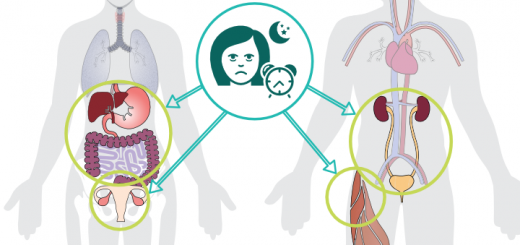Why do our efforts to heal ourselves and help our students sometimes fail?
4I recently watched a show called Fleishman is in Trouble, which unpacks the aftermath of a divorce. The story’s female protagonist, Rachel, played by Clare Danes, had a difficult childhood and traumatic childbirth. She feels raw and disoriented following her divorce. Rachel ends up at a yoga retreat in some remote location, where she is encouraged to go deep and let her suppressed emotions out. Initially apprehensive, Rachel gives in and discovers scream therapy. She screams her heart out, experiences raw emotion, and feels profound relief. After two days of screaming, she is sent home on her own without any follow-up support. All her previously buried trauma is now stirred up and close to the surface, but Rachel is not at all equipped to handle it. As a result, she experiences a complete emotional breakdown.
This type of approach is, unfortunately, common in various wellness programs. I guess the assumption is that the biggest step forward on the healing journey is to stir stuff up and encourage students to face it. But what comes after? Where does the student go from here? Are they equipped to handle it? Do they have the tools, the awareness, and the support system to see them through the emotional storm? If they do not, they can go to a very dark place following this well-meaning intervention.
From the perspective of Internal Family Systems (IFS) Therapy, getting in touch with your burdened exiled part is a complex journey that threatens to upset the delicate balance of your internal ecological system. After all, your managers and firefighters have been working hard to keep your exiled part locked away. If a prisoner attempts to escape, the alarms will inevitably sound. The guards will chase the escapee down and try to drag him back, potentially using force, all the while believing that they are saving society at large from a violent offender. Our inner protectors feel the same way about the surfacing exile they spent years guarding. Richard Schwartz writes: “Internal systems are equally delicate ecologies. Trying to change or heal one part without understanding its network of inner relationships often results in resistance at best and severe backlash at worst.” (1)
For example, one of the most documented phenomena is that victims of sexual violence often put on weight as an unconscious protective mechanism to make themselves less desirable to potential abusers. When a person like that begins an exercise or a yoga program in an effort to move more and begins to lose weight, the protectors get panicked because they believe that weight loss will lead to being vulnerable to abuse again. They will employ all kinds of strategies to sabotage the new program if this aspect of internal ecology is left unaddressed.
When your student asks for your help but is very resistant to your suggestions, or wants to move more but ends up binging shows on the couch every night, or wants to deal with neck tension but seems to always forget to do their practice, or any time they engage in self-sabotaging behavior, it can point to other parts of them exerting their influence. Those parts, for some reason, believe that their old behavior is justified, necessary, and in the best interest of the organism. It can be easy to dismiss ourselves or others as control freaks or lazy procrastinators, but there are always layers upon layers underneath.

Here is how Richard Schwartz describes the IFS Therapy approach to the activated protector parts (1):
- Resistance is the (often correct) response of protective parts to a potential threat (which includes the therapist) to the system.
- Protectors deserve to be understood, appreciated and comforted before the client tries to approach the vulnerable parts.
- The job of protectors is to ensure that a proposed therapy will not make matters worse. This is their duty. They are more knowledgeable than the therapist about the delicate ecology of the client’s inner system and the possible negative consequences of going too fast.
- Extreme protectors usually will not change until the system is less vulnerable. Consequently, we do not pressure protectors to change, even ones who are involved in destructive symptoms. Instead, we suggest that they can be liberated from their protective roles if they allow the client’s Self to help, and we invite them to consider what role they would prefer after the exiled part no longer needs protection. Then we ask them to permit the client’s Self to heal the part they protect. Finally, we ask if they are ready to move into new, preferred roles.
- Restoring trust in the Self is the quickest route to improved leadership and inner harmony. Therefore, rather than having the therapist help the client’s parts directly, we usually aim for the client’s Self to interact with the parts and report to the therapist. […] As clients continue to notice and be with their parts, between as well as in sessions, they come to appreciate that they are healing themselves. (1)
Therapists who employ IFS techniques have to be ecologically sensitive and stay grounded in their own Self to be effective in their work. “To be ecologically sensitive, we drop the interpretive stance of an expert and, in a spirit of humble curiosity, collaborate with the client’s parts to map their inner relationships. Once we have a preliminary map, we are guided by it in a spirit of respect and the willingness to keep learning.” (1) Instead of imposing on the student from the perspective of authority or attempting to interpret and analyze what is going on in their mind and body, we follow the student’s lead as they explore their own inner world, occasionally asking questions to guide them or to focus their attention on specific experiences. We treat each part of their inner landscape with respect and appreciation and ask the parts’ permission about different avenues of investigation or specific techniques.
Next time we will explore how we can figure out which part(s) of us are trying to get our attention through the physical discomfort and physiological symptoms – tune in!
[jetpack_subscription_form]References
- Internal Family Systems Therapy by Richard C. Schwartz and Martha Sweezy (affiliate link)




















Thank you for this interesting article!
Brilliant.
Thank you, Marianne! This question of stages of healing is so dear to my heart; I am so glad that this approach resonated with you!
This is really fascinating. Thank you for sharing another layer of understanding:)
Thank you, Yvonne! It’s so great to draw inspiration from other disciplines, I feel like it can really enrich our understanding of what’s happening 🙂